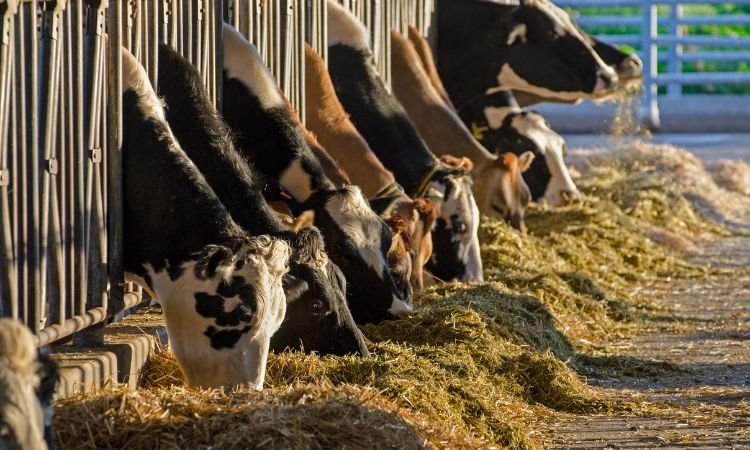
The India animal feed market has been witnessing steady growth due to the expansion of livestock, poultry, aquaculture, and pet care industries. The market attained a value of USD 14.34 Billion in 2024 and is projected to grow at a CAGR of 3.90% during the forecast period of 2025-2034, reaching an estimated USD 21.02 Billion by 2034. The sector’s growth reflects increasing demand for protein-rich diets, technological advancements in feed production, and rising awareness among livestock and pet owners regarding animal nutrition and health.
Market Overview
India, being one of the largest producers of livestock and poultry in the world, has a substantial demand for animal feed. The increasing focus on productivity, quality meat and dairy production, and aquaculture expansion has significantly driven feed consumption.
Key factors fueling market growth include:
Increasing livestock population, particularly poultry and dairy cattle.
Rising urbanization and disposable incomes leading to higher consumption of meat, eggs, and dairy products.
Government initiatives supporting livestock development and rural income generation.
Adoption of advanced feed formulations, including fortified and functional feeds.
Challenges such as fluctuating raw material costs, stringent regulations, and fragmented production practices continue to test the industry. Nevertheless, opportunities exist in premium pet feed, organic feed, and technology-driven solutions that enhance production efficiency.
Segmentation by Product
Poultry Feed
Poultry feed remains one of the largest segments in India’s animal feed market. Broilers and layers require nutrient-rich, balanced diets to ensure optimal growth, egg production, and disease resistance. Increasing poultry consumption, both domestically and for export, has elevated the demand for high-quality poultry feed formulations.
Cattle Feed
The cattle feed segment is driven by the growing dairy and meat industry. Dairy farmers are adopting feed formulations enriched with proteins, vitamins, and minerals to enhance milk yield and cattle health. The segment benefits from government support programs promoting productivity and animal welfare.
Swine Feed
Though smaller in scale compared to poultry and cattle, the swine feed market is expanding as pig farming becomes more intensive. Balanced nutrition is essential to ensure growth, prevent diseases, and improve meat quality, making swine feed an important niche segment.
Aqua Feed
India’s aquaculture sector is witnessing rapid growth due to rising seafood demand. Fish and shrimp farming rely heavily on high-protein, easily digestible aqua feeds to enhance growth rates and productivity. This segment is expected to witness significant growth as aquaculture continues to expand in coastal and inland regions.
Pet Feed
The pet feed segment is emerging as a lucrative opportunity driven by increasing urban pet ownership and premiumization trends. Pet owners are opting for packaged, specialized, and nutritionally balanced pet foods for dogs, cats, and other companion animals.
Other Feed Types
Feeds for goats, sheep, rabbits, and specialty livestock also contribute to market growth. Niche products, such as organic or functional feeds, are gaining traction among health-conscious farmers and pet owners.
Segmentation by Form
Pellets
Pelleted feeds are widely adopted due to uniform nutrition delivery, ease of storage, and reduced wastage. They are particularly popular in poultry and cattle farming.
Crumbles
Crumble feeds are preferred for young poultry and small livestock, offering an easy-to-consume texture that supports early growth stages.
Mash
Mash feeds are cost-effective and commonly used in rural areas. Though less convenient than pellets or crumbles, they remain a significant portion of the market due to affordability.
Other Forms
Specialty feed forms, including extruded feeds for aquaculture and processed pet foods, continue to expand in niche markets.
Regional Analysis
India’s animal feed market exhibits significant regional diversity:
Western India (Maharashtra, Gujarat): Focused on dairy cattle feed and poultry.
Southern India (Tamil Nadu, Andhra Pradesh): Strong demand for poultry and aqua feed due to coastal aquaculture practices.
Northern India (Punjab, Haryana): High dairy and poultry production, driving demand for cattle and poultry feed.
Eastern India: Emerging markets with growing livestock populations and adoption of modern feed practices.
These regional variations provide opportunities for localized feed manufacturing and targeted marketing strategies.
Market Dynamics
SWOT Analysis
Strengths: Large livestock base, increasing protein consumption, government support, and organized production practices.
Weaknesses: High raw material dependency, fragmented market, and occasional quality inconsistencies.
Opportunities: Rising pet ownership, functional/organic feeds, technological advancements, and export potential.
Threats: Price volatility of key raw materials, disease outbreaks, and stringent regulations.
Porter’s Five Forces Analysis
Supplier Power: Moderate due to dependence on feed ingredients like maize, soybean, and oilseeds.
Buyer Power: High among large commercial farms and institutional buyers.
Threat of New Entrants: Moderate; requires significant investment in quality and distribution.
Threat of Substitutes: Low to moderate; alternative feeds are limited in effectiveness.
Industry Rivalry: Intense competition among domestic and international feed manufacturers.
Key Trends and Developments
Increased adoption of fortified and functional feeds to improve animal health and productivity.
Expansion of premium and organic pet feeds, especially in urban areas.
Incorporation of automation and technology in feed manufacturing, quality control, and supply chain management.
Strategic collaborations, mergers, and acquisitions among feed companies to expand market reach.
Government initiatives promoting sustainable feed production and quality standards.
Competitive Landscape
The India animal feed market consists of both large-scale players and regional manufacturers. Key strategies include:
Research and development of specialized feed formulations.
Expansion of distribution networks across rural and urban regions.
Introduction of premium and organic feed products for pets and high-value livestock.
Partnerships with agricultural cooperatives, corporate farms, and aquaculture companies.
This mix of large and small players ensures a competitive, dynamic market, with innovation as a key differentiator.
Forecast and Outlook (2025–2034)
With a projected CAGR of 3.90%, the India animal feed market is expected to grow steadily from USD 14.34 Billion in 2024 to USD 21.02 Billion by 2034. Key growth drivers include:
Rising demand for poultry, dairy, and aquaculture products.
Increasing adoption of modern and technologically advanced feed solutions.
Expansion of premium and functional feeds for both livestock and pets.
Growing awareness of animal health and nutrition among farmers and pet owners.

